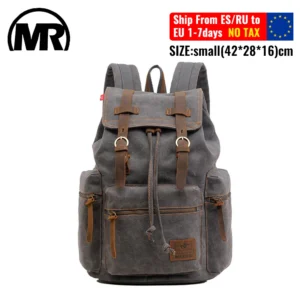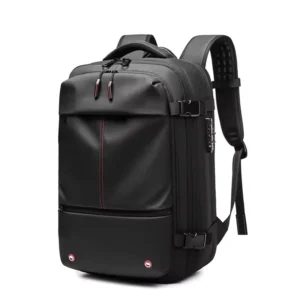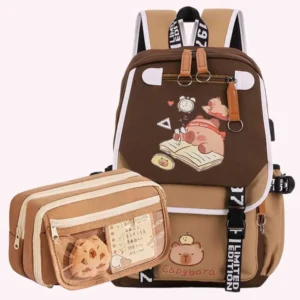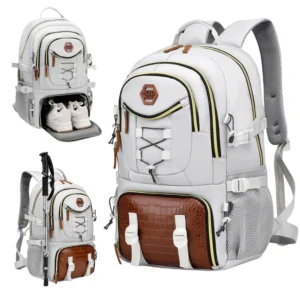The Enduring Allure: Why Retro Leather Backpacks Stand the Test of Time
In a world of fast fashion and disposable accessories, retro leather backpacks stand as monuments to craftsmanship and timeless design. These aren’t merely bags – they’re heritage pieces that blend vintage aesthetics with practical functionality. The appeal of a well-crafted leather backpack goes beyond simple nostalgia; it represents a conscious choice for quality and longevity.
What makes retro leather backpacks so special? Unlike their synthetic counterparts, genuine leather backpacks with vintage-inspired designs offer unique benefits:
- Unmatched durability – Quality leather backpacks typically last 10-20 years compared to synthetic bags’ 1-3 year average lifespan
- Character development – Leather develops a unique patina over time, becoming more beautiful with age
- Weather resistance – Properly treated leather repels water and protects contents naturally
- Sustainable choice – Investing in one quality piece eliminates the need for frequent replacements
The timeless appeal of vintage leather backpacks isn’t subject to passing trends. Fashion analysts have noted that while specific design elements may cycle in popularity, the core aesthetic of traditional leather bags remains consistently desirable across decades. This enduring quality makes them both fashion statements and practical investments.
Perhaps most remarkable is how retro leather backpacks adapt to their owners. Through regular use and proper leather conditioning and waterproofing, these bags develop distinctive wear patterns that tell a personal story. The scratches, creases, and color variations aren’t flaws—they’re character marks that enhance the backpack’s authentic retro appeal.
As we explore the elements that define a genuine retro leather backpack, you’ll discover how to identify quality pieces that will serve faithfully for years while enhancing your personal style.
Deconstructing “Retro”: Essential Elements of Vintage-Inspired Leather Backpacks
Defining Silhouettes and Heritage Designs
The foundation of any authentic retro leather backpack lies in its silhouette – the overall shape that instantly communicates its vintage inspiration. Traditional designs have survived for generations because they successfully balance form and function.
Classic leather rucksack designs feature several distinctive elements that signal their heritage:
- Flap-over closures – These provide both security and weather protection while creating that unmistakable vintage profile
- Drawstring openings – Often paired with flaps, these allow easy access while maintaining a rustic appearance
- Rounded top designs – Inspired by old-school knapsacks and military packs
- Boxy rectangular shapes – Influenced by traditional school bags and briefcases
Each silhouette carries its own historical significance. Military-inspired rucksacks were designed for durability in harsh conditions. Academic backpacks prioritized book storage and organized compartments. Explorer packs emphasized weather resistance and accessibility.
The most authentic retro designs maintain these heritage elements while subtly incorporating modern functionality. When evaluating silhouettes, look for clean lines and proportional dimensions that honor traditional forms without appearing costume-like or overly manufactured.
Authentic Hardware and Distinctive Accents
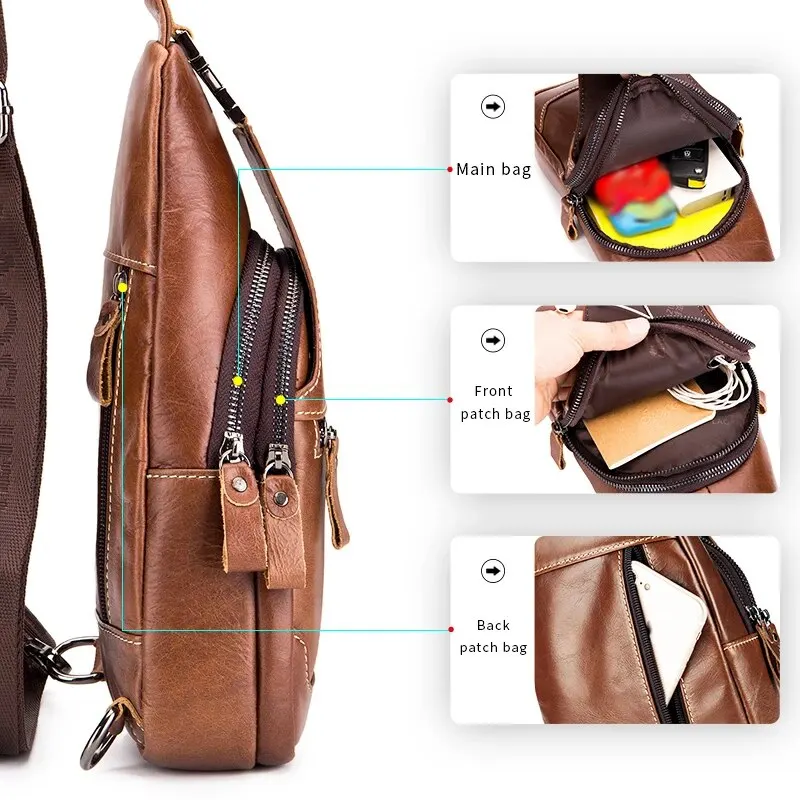
Hardware isn’t merely functional – it’s the jewelry of a retro leather backpack. Authentic vintage-inspired designs feature distinct metal elements that contribute significantly to both aesthetics and durability:
- Brass or antiqued metal finishes – These develop character over time rather than looking worn out
- Sturdy buckles – Often slightly oversized, providing both visual interest and secure closures
- Reinforced rivets – Placed at stress points, these combine function with distinctive styling
- Leather strap keepers – Small but significant details that manage excess strap length
Quality hardware does more than look good – it ensures your backpack functions reliably for years. The distinctive sound of a solid brass buckle closing or the satisfying weight of metal fixtures signals quality craftsmanship. When these elements require conditioning and maintenance, they respond by developing deeper character rather than deteriorating.
The most authentic pieces feature hardware that serves a genuine purpose rather than being merely decorative. Look for consistent metal finishes throughout the bag and hardware that’s proportional to the backpack’s size – oversized buckles on a small bag often signal inauthentic design.
Leather Characteristics That Define the Retro Aesthetic
The soul of any retro leather backpack lies in the leather itself. Authentic vintage-inspired designs showcase specific leather characteristics:
- Pull-up effect – Quality leather that lightens when bent or folded, revealing rich color variation
- Natural grain patterns – Unique to each hide, these subtle variations create character
- Thickness and weight – Substantial enough to maintain structure while still being flexible
- Traditional color palette – Rich browns, deep burgundies, honey tans, and classic blacks
Full-grain leather backpacks represent the gold standard for retro designs. This highest quality cut comes from the top layer of the hide, retaining all natural grain patterns and developing a beautiful patina over time. Unlike corrected-grain leathers, which have been sanded and artificially embossed, full-grain leather tells an authentic story through its natural marks and variations.
The retro aesthetic embraces these natural characteristics rather than hiding them. Small scars, growth marks, and slight color variations aren’t flaws – they’re the authentic elements that mass-produced synthetic alternatives try unsuccessfully to imitate.
Historical Design Influences Worth Recognizing
Today’s finest retro leather backpacks draw inspiration from rich historical traditions:
- Military heritage – Rugged functionality, accessible pocket designs, and durable construction
- Academic tradition – Structured compartments, comfortable carrying systems, and refined details
- Exploration equipment – Weather-resistant treatments, adaptable carrying options, and secure closures
- Artisanal craftsmanship – Hand-stitched details, traditional tanning methods, and time-honored techniques
Understanding these influences helps identify authentic vintage-inspired designs versus superficial imitations. True retro backpacks honor these traditions by incorporating elements that served specific purposes rather than merely mimicking an aesthetic.
Selecting Your Ideal Retro Leather Backpack: Expert Criteria
Understanding Leather Types and Their Unique Properties
The foundation of any quality retro backpack is the leather itself. Different types offer distinct advantages and aesthetic qualities:
Full-Grain Leather: The gold standard for retro backpacks. This premium cut from the top layer of the hide includes all natural grain patterns. It’s exceptionally durable, develops a beautiful patina, and reveals more character over time. While more expensive initially, full-grain leather typically lasts decades with proper care.
Top-Grain Leather: The second highest quality, with the outermost layer lightly sanded to remove imperfections. Still durable and attractive, top-grain leather is more consistent in appearance than full-grain but develops less distinctive character over time.
Crazy Horse Leather: A full-grain leather treated with waxes and oils that create a distinctive pull-up effect. When bent or scratched, the leather temporarily lightens at stress points, creating an instantly aged appearance that’s perfect for retro aesthetics.
Vegetable-Tanned Leather: Processed using natural tannins from plant materials rather than chemicals. This traditional tanning method produces leather with exceptional aging properties and environmental benefits. The leather tends to start firmer but softens beautifully with use.
Warning signs of inferior leather include:
* Perfectly uniform appearance without natural variations
* Plastic-like feel or unnaturally smooth surface
* Chemical smell rather than natural leather aroma
* Edges that appear layered or that peel when scratched lightly
Understanding the principles of leather oiling and waterproofing helps maintain these premium materials for years of reliable service.
Evaluating Hardware Quality and Longevity
Quality hardware transforms a good leather backpack into an exceptional one that will serve faithfully for decades:
- Buckle construction: Look for solid metal with substantial weight and smooth mechanical action
- Zipper quality: YKK or RiRi zippers operate smoothly and resist corrosion
- Rivets and studs: Should be firmly seated with no wiggling or gaps around edges
- Strap attachments: Reinforced with multiple securing points, not just decorative stitching
To evaluate hardware quality:
* Give buckles a firm tug to check attachment security
* Cycle zippers completely several times to check for smooth operation
* Gently pull on riveted areas to ensure they’re securely attached
* Check that metal finish is consistent throughout all hardware pieces
Beware of lightweight hardware with irregular plating, uneven color, or rough edges. These often indicate corners cut during manufacturing that will impact longevity.
Examining Craftsmanship and Construction Details
Superior craftsmanship distinguishes authentic retro backpacks from mass-produced alternatives:
- Stitching quality: Look for tight, even stitches with no loose threads or puckering
- Edge finishing: Well-burnished or painted edges that resist fraying and moisture penetration
- Reinforcement: Extra stitching or rivets at stress points like handle attachments and strap connections
- Interior construction: Clean seams, secure pocket attachments, and thoughtful organization features
Key areas to inspect include:
* Shoulder strap attachments, which bear significant weight
* Bottom panel construction, which experiences constant wear
* Handle connections, which undergo frequent stress
* Interior seams, which often reveal overall construction quality
Authentic retro pieces often feature hand-stitched elements or combination machine/hand techniques. These aren’t just aesthetic choices—they create stronger, more flexible seams that better accommodate the natural movement of leather.
Assessing Functionality and Essential Features
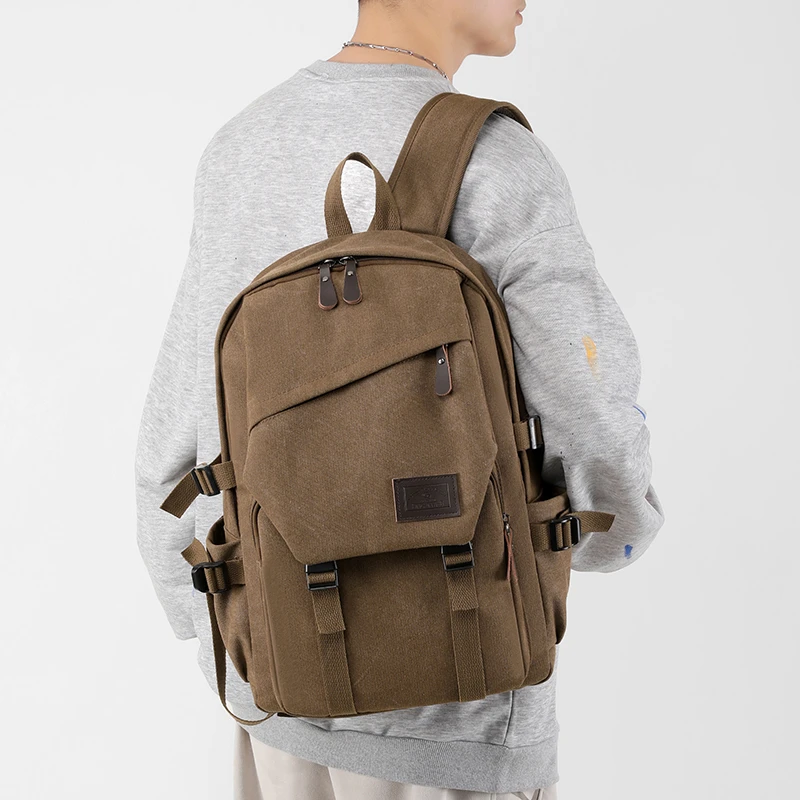
The best retro leather backpacks balance authentic vintage aesthetics with practical functionality for today’s needs:
Main Compartment Design
* Look for generous openings that allow easy access
* Consider depth vs. width for your specific carrying needs
* Evaluate internal volume based on daily essentials (12-18 liters for everyday use, 20-30 liters for travel)
Organization Features
* Traditional slip pockets maintain vintage appeal while organizing small items
* Dedicated laptop sleeves (ideally fitting up to 15” devices) add modern functionality
* Key clips and secure inner pockets protect valuables without disrupting classic design
External Features
* Side pockets for water bottles or quick-access items
* Secure back zippered pockets for valuables
* Front pockets with weather-protective flaps
Comfort Considerations
* Padded shoulder straps (at least 2” wide for proper weight distribution)
* Breathable back panels that don’t compromise the vintage aesthetic
* Adjustable features to accommodate different body types and wearing preferences
For leather maintenance during daily commutes, accessibility and protection features become especially important. Consider how easily you can retrieve items without compromising the backpack’s contents or structure.
The most successful retro designs incorporate these modern conveniences while maintaining visual authenticity—hidden laptop compartments, discreet padding, and thoughtfully placed pockets that don’t disrupt classic silhouettes.
Styling Your Retro Leather Backpack: Versatile Looks for Every Occasion
Casual & Everyday Ensembles
The versatility of retro leather backpacks shines brightest in casual settings, where their natural character enhances relaxed outfits:
- Denim pairings: Dark raw denim jeans + white oxford shirt + tan leather backpack creates a timeless weekend look
- Layer play: Chambray shirt under a navy sweater with dark brown leather backpack adds texture and depth
- Vintage vibes: Faded jeans + heritage brand t-shirt + distressed leather backpack creates authentic casual style
- Seasonal adaptation: Swap lightweight chinos and short sleeves in summer for wool layers and boots in winter
Footwear coordination matters significantly—brown leather boots or white minimalist sneakers complement most leather backpack tones. The natural aging process of both your boots and backpack creates a cohesive look over time.
The thoughtful design of retro leather backpack features allows them to enhance rather than overwhelm your casual style. Their understated elegance elevates simple outfits while their functionality serves everyday needs.
Business Casual & Professional Integrations
Contrary to conventional thinking, retro leather backpacks can complement professional attire when selected thoughtfully:
For men, pair a structured medium-brown leather backpack with navy chinos, a light blue button-down, and brown leather loafers for a polished but approachable office look. The backpack adds character while maintaining professionalism.
Women might combine a compact burgundy leather backpack with a tailored blazer, slim-cut trousers, and ankle boots for a sophisticated professional ensemble that transitions seamlessly from workday to evening.
Key considerations for professional settings include:
* Choosing smaller or medium-sized backpacks with clean lines
* Opting for darker, more uniform leather finishes
* Selecting designs with minimal external hardware
* Ensuring the backpack complements your leather shoes or belt
The right retro leather backpack signals attention to quality and timeless style—valuable professional attributes that synthetic alternatives simply can’t convey.
Artistic & Bohemian Expressions
For creative spirits, retro leather backpacks become the perfect canvas for personal expression:
Combine a distressed leather rucksack with flowing fabrics, layered jewelry, and natural textiles for an authentic bohemian aesthetic. The contrast between structured leather and fluid clothing creates visual interest.
Artistic styling opportunities include:
* Pairing rich cognac leather with jewel-toned velvets and silks
* Adding personalized touches like vintage scarves tied to straps or artisan pins
* Combining vintage-inspired leather with modern asymmetrical cuts
* Creating deliberate contrast between rugged leather and delicate fabrics
The natural variations in leather complement the handcrafted aesthetic valued in artistic communities. As your backpack develops unique wear patterns, it becomes an even more personal expression of individual style.
Travel & Adventure Aesthetics
Retro leather backpacks truly shine during travel, where their combination of functionality and style proves invaluable:
- Urban exploration: Pair with comfortable walking shoes, convertible travel pants, and layered tops for city adventures
- Weekend getaways: Combine with casual henley shirts, comfortable jeans, and versatile jackets
- Photography excursions: The accessible pockets of leather travel backpacks allow quick gear access while maintaining style
- Transportation transitions: Choose outfits that remain comfortable and unwrinkled during long journeys
For travelers, practical features become especially important—water resistance, secure closures, and comfortable weight distribution allow you to focus on experiences rather than equipment concerns.
The vintage explorer aesthetic isn’t just about appearance—it channels the spirit of discovery and adventure that inspired the original designs. Your retro leather backpack becomes both functional equipment and thematic expression of the journey.
Creating Harmony: Color Coordination & Material Pairing
Thoughtful color coordination elevates your retro leather backpack from accessory to style cornerstone:
- Complementary leather tones: Medium brown leather pairs beautifully with navy, burgundy, forest green, and cream
- Seasonal adaptations: Lighter honey tones for spring/summer, deeper browns and burgundies for fall/winter
- Textural interplay: Combine smooth leather with textured fabrics like wool, tweed, or denim
- Material harmony: Echo your leather backpack with subtle leather accents in shoes or belts
The natural aging process of quality leather creates an ever-evolving color palette. A new light brown backpack might eventually develop rich amber tones, while darker leathers often deepen to lustrous mahogany hues.
For maximum versatility, consider neutral leather tones that work across multiple seasons and outfit combinations. Extremely light or vibrant leather colors make strong statements but may limit versatility.
Caring for Your Investment: Maintenance and Preservation
Essential Cleaning Techniques
Regular maintenance preserves both appearance and structural integrity of your retro leather backpack:
Begin with gentle dust removal using a soft brush or slightly damp cloth. For more thorough cleaning, use a mild leather soap specifically formulated for your leather type. Apply sparingly with a soft cloth using circular motions, then wipe away residue with a clean damp cloth.
For stubborn stains, address them immediately—blot (don’t rub) liquids, and use appropriate leather cleaners for specific issues. Avoid household cleaners, which can damage leather’s natural oils and protective finish.
Essential tools for proper maintenance include:
* Soft-bristled brush for dust removal
* Microfiber cloths for application and buffing
* pH-balanced leather cleaner
* Leather-specific soap for deeper cleaning
Following DIY leather care practices for travel backpacks ensures your bag remains in excellent condition even during adventures. Regular maintenance requires just minutes but adds years to your backpack’s lifespan.
Proper Conditioning for Longevity
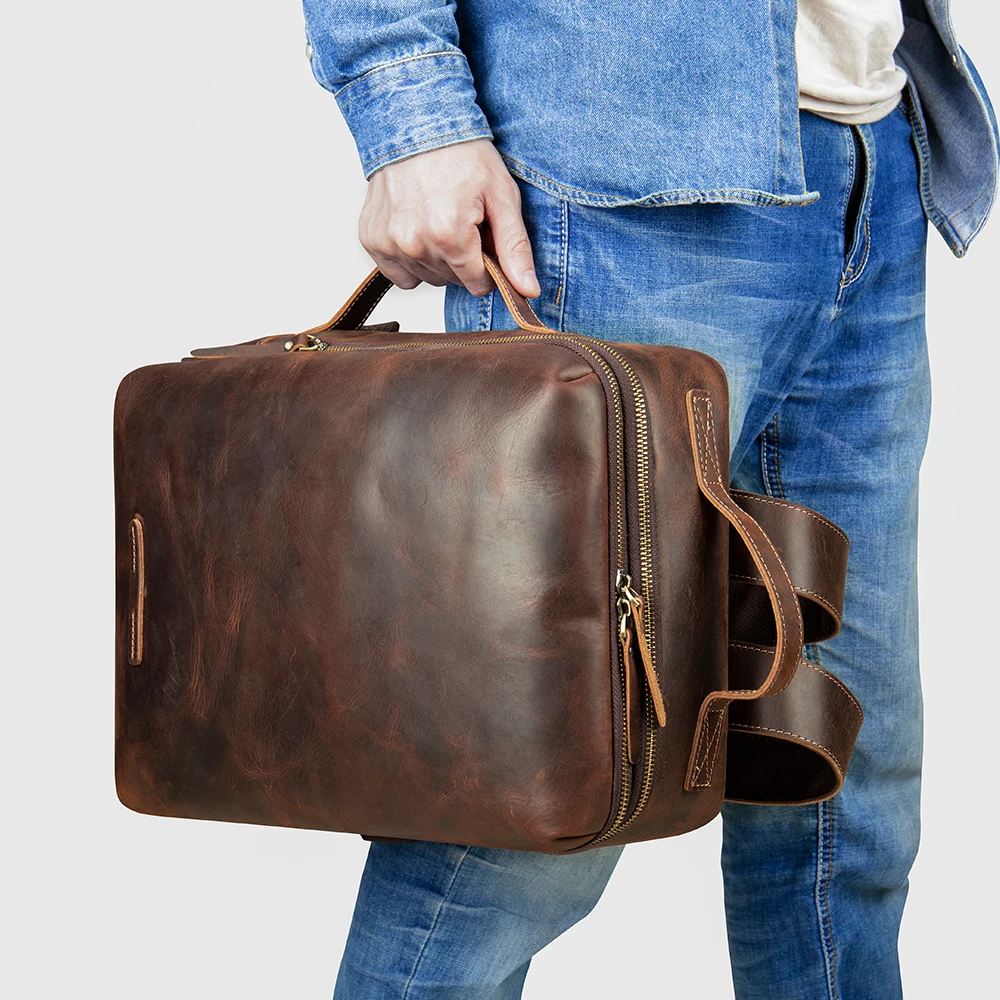
Conditioning prevents leather from drying, cracking, and losing its natural flexibility:
Apply quality leather conditioner every 3-6 months (more frequently in dry climates or with regular use). Use a small amount worked into the leather with gentle circular motions, allowing 15-30 minutes absorption time before buffing away excess.
Choose conditioners appropriate for your specific leather type:
* Beeswax-based products for weather resistance
* Neatsfoot oil for softening stiff leather
* Lanolin-based conditioners for general maintenance
* Specialized products for exotic or vegetable-tanned leathers
Signs your backpack needs conditioning include:
* Leather feeling dry or stiff to touch
* Visible light spots when you bend the leather
* Slight surface cracking or unusual dullness
* Reduced water resistance (drops absorb quickly rather than beading)
Consistent conditioning maintains suppleness while enhancing leather’s natural protective properties. The process also deepens color and enriches the developing patina.
Protective Measures for Daily Use
Preventative care significantly extends your backpack’s lifespan:
- Apply water and stain repellent designed specifically for leather goods
- Avoid prolonged direct sunlight, which can fade and dry leather
- Store using proper support to maintain shape when not in use
- Keep away from heat sources like radiators or car heaters
- Use rain covers during heavy downpours
For complete protection against water damage, explore waterproofing techniques for leather bags that maintain breathability while adding resistance to moisture. Most quality water-repellent products need reapplication every 1-3 months depending on use intensity and weather conditions.
Develop handling habits that minimize unnecessary wear:
* Lift by the handle rather than the shoulder straps when placing down
* Avoid setting on rough or dirty surfaces when possible
* Keep pens capped and liquids sealed when inside
* Don’t overstuff beyond designed capacity
These simple preventative measures require minimal effort but dramatically impact longevity.
14 Inch Leather Laptop Backpack, Brown Leather Backpack, Men's Leather Backpack, Vintage Leather Backpack
Price range: $177.28 through $199.12 Select options This product has multiple variants. The options may be chosen on the product pageCarry On Leather Backpack, Roll Top Leather Backpack
Price range: $77.76 through $96.48 Select options This product has multiple variants. The options may be chosen on the product page17 Inch Leather Laptop Backpack, Men's Leather Travel Backpack, Men's Leather Work Backpack
Price range: $106.28 through $143.88 Select options This product has multiple variants. The options may be chosen on the product page- Price range: $80.72 through $108.04 Select options This product has multiple variants. The options may be chosen on the product page
Full Grain Leather Backpack, Men's Leather Laptop Backpack, Men's Leather Work Backpack
$353.46 Select options This product has multiple variants. The options may be chosen on the product page15 Inch Leather Laptop Backpack, Carry On Leather Backpack
Price range: $136.84 through $139.88 Select options This product has multiple variants. The options may be chosen on the product page
Embracing Character: When Wear Becomes Charm
The most beautiful aspect of retro leather backpacks is their ability to transform wear into character:
Unlike synthetic materials that simply deteriorate, quality leather develops a patina—a lustrous surface character unique to each piece and its journey. Slight darkening at edges, subtle color shifts where hands frequently touch, and gentle creasing patterns all contribute to this evolving beauty.
Learn to distinguish between character-building wear and actual damage:
* Natural color variation and darkening = desirable patina
* Even softening of originally stiff leather = proper breaking-in
* Minor surface scratches that blend with use = character
* Deep gouges, stitching failures, or hardware damage = issues requiring repair
The Japanese concept of wabi-sabi—finding beauty in imperfection and natural aging—perfectly describes the evolving character of quality leather goods. Your backpack becomes more distinctly yours with each passing month, developing a visual history that mass-produced items can never achieve.
The Retro Leather Backpack Advantage: Functionality Meets Timeless Style
The true value of a quality retro leather backpack emerges over time. While the initial investment might exceed synthetic alternatives, the economics become compelling when considering longevity—a premium leather backpack often costs less per year of use than replacing cheaper options repeatedly.
Beyond practical considerations, these timeless pieces offer aesthetic advantages that transcend trends. While fashion cycles constantly introduce new synthetic designs, the classic appeal of well-crafted leather remains consistently relevant. As sustainability concerns grow more prominent, the evolution of vintage leather backpacks demonstrates their enduring place in conscious consumer choices.
Perhaps most significantly, retro leather backpacks create a personal connection that mass-produced alternatives rarely achieve. The way the leather molds to your habits, the unique patina that develops from your specific use patterns, and the memories accumulated during years of service transform these bags from mere accessories into meaningful companions.
When selecting your ideal retro leather backpack, prioritize quality construction, authentic materials, and designs that balance heritage aesthetics with practical functionality. By investing in craftsmanship rather than temporary trends, you acquire not just a backpack, but a legacy piece that improves with every adventure.

